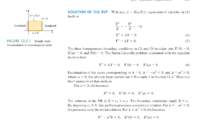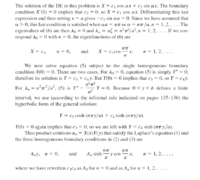shreddinglicks
Junior Member
- Joined
- Apr 16, 2016
- Messages
- 76
I am studying an example problem in my textbook that determines a solution of Laplaces equation applied to a flat plate. I have attached the final solution. I have no issue obtaining the summation term. I don't understand how the first term comes about. If I take n = o, I get sinh(0) = 0.
How does the book have the term written as Asub0 * y ? Is there a trick applied to the summation term?
How does the book have the term written as Asub0 * y ? Is there a trick applied to the summation term?



